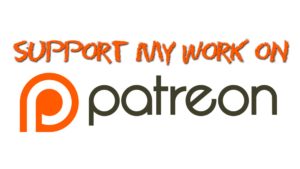How Habits
and
Education Collide
The best definition I have come across for a habit is, “action without thought.” A quick search on the internet says that a habit is, a settled or regular tendency or practice, especially on that is hard to give up …
We certainly need habits, especially in education. Students, in order to be successful, need to be in the habit of being on time, having their homework done properly, whatever the classroom norms and expectations are need to habitual. In other words, the day to day activities of school should be done automatically, without thought or the student needing to be reminded.
And certainly we want students to be in habits when it comes to performance. For example, putting their name on their paper, showing appropriate work, employing effective questioning strategies and the like all end in higher levels of academic performance.
But what about what they’re learning. Are we teaching them habits, that is, the action without the thought? I say that we definitely are, and that is in direct conflict with the purpose of education. That purpose is to give people the opportunity to learn how to think in a safe environment where the messiness that comes from the process of learning to think does not have major consequences.
As with most thinks related to teaching, this is highly nuanced and subjective, and there are certainly times where teaching a kid a habit that leads to a right answer or desired outcome is best. That’s part of what makes education so powerful is that you can learn from what others before have done and take the next step, right?
What makes this double tricky is that we grade the results of habits. Can a student see a prompt and spit out an appropriate output? If so, they’ve obviously learned, right?
If you’re an expert in the field you’re teaching, you most likely approach problems at the level you’re teaching habitually. Little reference to the ideas at play is required for you to arrive at a solution.
If you’re not an expert but have enough background to teach the topic, you’ve probably brushed up with some Khan Academy videos or the like, where you were shown those efficient methods and techniques that are the ways the expert acting habitually would do.
If a student is able to pass a standardized test they must also possess these habits. However, if they’re taught the actions without thought, the process alone, they have no way to connect what they’re doing to other things.
Let’s consider how thinking and problem solving really works. After all, learning to think is the purpose of education, right? It’s highly unlikely that any student will have a practical use for 90% of the materials learned in your class. But the learning that takes place, that is entirely useful and practical!
In thinking and problem solving the issue at hand must have a level of novelty. If not, a habitual approach will be successful and little thinking will take place. The problem must first be grappled with and understood and then the person dealing with this task can generate some ideas. These ideas are the conceptual understanding of the task at hand. From these ideas come the actions, the steps taken. Upon completion review of the entire undertaking is performed and if the outcome was desirable, success can be claimed.
Often it is the case that not only is success claimed, but all similar problems now have a heuristic background. Upon further review and generalization and actual procedure can be articulated.
Since the procedure is the measured and share-able portion of this entire development, that is what is written in books and what is measured on tests.
Yet, it all came from a conceptual understanding, an idea. The idea initiates the procedure.
To not allow students access to the time and level of involvement required to explore ideas and develop heuristic approaches to problems is to rob them of the very purpose of education. They do not learn how to learn when they are trained to follow steps given a particular input. That’s training. Sit Ubu, sit. Good dog!
It is certainly a challenge and uncomfortable for all parties involved to have students develop this level of understanding and explore without explicit direction. However, it is the absence of such things that has education in the United States in such a terrible predicament.
My challenge to you, the reader, is to pick an overarching, big idea in your topic, something that is coming up next, and develop an activity/problem that will require a lot of thinking and little direction from you. Make it something where the student result can be assessed as correct or incorrect based on the concepts at play, or by reverting back to the original question itself.
What you’ll find is that the students uncover connections that you have forgotten or taken for granted, or maybe never realized at all. Over time, with regular activities/lessons like this they will begin to adjust to what is expected of them and they’ll increasingly enjoy actual learning!
Let me know what you think by leaving me a comment.
Thank you once again for reading.
Philip Brown



